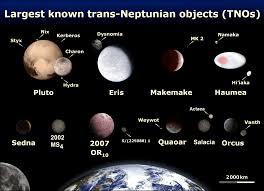
Breaking News
 Why Mamdani's socialist revolution in New York has sparked a civil war for Democrats...
Why Mamdani's socialist revolution in New York has sparked a civil war for Democrats...
 Tech tycoon whose parents fled communism offers six reasons NYC will become hellish dystopia...
Tech tycoon whose parents fled communism offers six reasons NYC will become hellish dystopia...
 NASA detects bizarre boost in interstellar visitor's speed as it moves toward Earth
NASA detects bizarre boost in interstellar visitor's speed as it moves toward Earth
 Britain "Doomed" Under Labour As Wealthy Scramble To "Get The Hell Out Of London
Britain "Doomed" Under Labour As Wealthy Scramble To "Get The Hell Out Of London
Top Tech News
 Japan just injected artificial blood into a human. No blood type needed. No refrigeration.
Japan just injected artificial blood into a human. No blood type needed. No refrigeration.
 The 6 Best LLM Tools To Run Models Locally
The 6 Best LLM Tools To Run Models Locally
 Testing My First Sodium-Ion Solar Battery
Testing My First Sodium-Ion Solar Battery
 A man once paralyzed from the waist down now stands on his own, not with machines or wires,...
A man once paralyzed from the waist down now stands on his own, not with machines or wires,...
 Review: Thumb-sized thermal camera turns your phone into a smart tool
Review: Thumb-sized thermal camera turns your phone into a smart tool
 Army To Bring Nuclear Microreactors To Its Bases By 2028
Army To Bring Nuclear Microreactors To Its Bases By 2028
 Nissan Says It's On Track For Solid-State Batteries That Double EV Range By 2028
Nissan Says It's On Track For Solid-State Batteries That Double EV Range By 2028
 Carbon based computers that run on iron
Carbon based computers that run on iron
 Russia flies strategic cruise missile propelled by a nuclear engine
Russia flies strategic cruise missile propelled by a nuclear engine
 100% Free AC & Heat from SOLAR! Airspool Mini Split AC from Santan Solar | Unboxing & Install
100% Free AC & Heat from SOLAR! Airspool Mini Split AC from Santan Solar | Unboxing & Install
Our Solar System has 127 probable planets and 500+ possibles

The International Astronomical Union (IAU) has accepted four as official dwarf planets: Pluto, Eris, Haumea, and Makemake, as well as Ceres in the inner Solar System.
Philip Metzger has recently published a case that all dwarf planets are planets. The qualifying feature of a dwarf planet is that it "has sufficient mass for its self-gravity to overcome rigid-body forces so that it assumes a hydrostatic equilibrium (nearly round) shape" is enough to categorize as a planet.
We have 8 official planets and one or two likely planet 9 and 10 candidates which have some evidence but have not been found.
According to Mike Brown of Thu Jun 21 2018 there are:
10 objects which are nearly certainly dwarf planets,
16 objects which are highly likely to be dwarf planets (not recounting the certain),
39 objects which are likely to be dwarf planets (not recounting certain and highly likely),
88 objects which are probably dwarf planets (without recounting above categories)
573 objects which are possibly dwarf planets (without recounting above categories).



